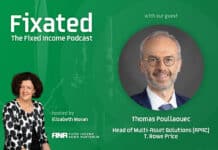
In anticipation of this week’s Fed meeting we publish some insights below from Dr. Stephen R. Foerster CFA, award-winning author, and professor of finance at Ivey Business School at Western University in London, Ontario, Canada.
- There are always winners and losers when there is a change in interest rates. In general, lower rates favor borrowers and hurt lenders and savers. It’s really a case of two sides of the same coin. If you have more money in the form of debt than you do in savings, then on balance you will benefit from rate cuts. But it’s more nuanced (as I explain more below). A lot depends on whether you currently have locked-in borrowing or savings rates.
- Consumer sectors—staples and discretionary—along with the real estate sectors tend to benefit from rate cuts. Any consumers who rely on credit benefit from lower costs and thus improve spending opportunities. Similarly, falling mortgage rates will benefit households. How quickly the impact of lower rates is felt depends on whether households have variable or fixed financing rates—if the latter, the impact won’t be felt until the time of renewal.
- It’s important to note that the Fed rates only impact short-term rates. Banks tend to follow movements in the Fed rate as they set prime rates. Longer-term rates may be impacted by other factors, such as expectations of inflation.
- The Fed has a dual mandate: ‘promote effectively the goals of maximum employment, stable prices, and moderate long term interest rates.’ It’s a balancing act between higher employment and lower inflation. The Fed tends to raise interest rates, or tighten monetary policy, when the economy appears to be overheating, which might lead to higher inflation. The reverse is true when the economy appears to be weakening.
- Currently, the Fed has helped curb inflation, which has declined from a recent peak of 6% (personal consumption expenditures measure) in April 2021 to its target of 2% in July 2023, currently at an annual rate of 2.8%. The Fed appears comfortable lowering interest rates now to help stimulate the economy since inflation is now under control.
Also read: Profit Margins Are A Reason For Concern: Rates Cuts
- The timing of the impact of Fed rate cuts is somewhat uncertain and unpredictable—perhaps several months or more. The Fed doesn’t have a crystal ball. One analogy I’ve heard for what it’s like to be a central banker: imagine driving a car on a windy road in the pouring rain with faulty windshield wipers. You can see where you’ve been through the rearview mirror, but it’s not perfectly clear where you’re going.
- Lower interest rates are generally favorable for both bondholders and stockholders. For bondholders, there is an inverse relationship between bond prices and interest rates: when interest rates decline, bond prices go up. That is because if you own, say, a 10-year bond selling for par with a 6% coupon rate, and then all interest rates go down by, say, 0.5%, then a new bond will be issued with a coupon of 5.5%, making your “old” bond more attractive because of its higher coupon—its price will go up.
- For stockholders, the price you pay should reflect the present value of expected cash flows or dividend payments. When interest rates decline, the discount rate declines, making the stock more valuable. But with a Fed rate cut, this just lowers the risk-free rate and doesn’t impact on the riskiness of a corporate bond, or of stocks.
































